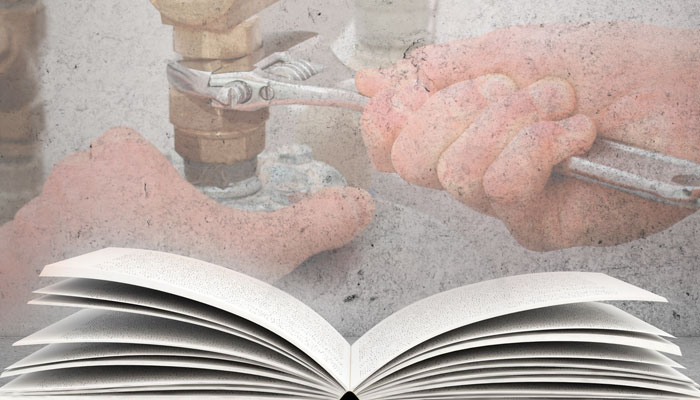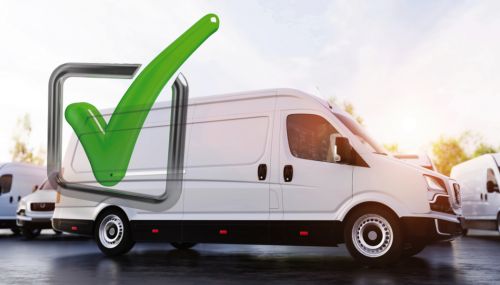Installers, technicians can find important answers inside
I’m a trainer, but I’m no smarter than the next guy. In fact, I’m not afraid to say that I have had the pleasure of meeting a lot of very smart people over the years. But they still come to my classes. Why? Because I’m a gatherer of information. My classes are all about understanding the application and operation of the parts that make up heating and hot water systems. All of the information is out there, and you just need to know where to look.
Which brings me to one of my pet peeves – the boiler Installation and Operation Manual or IOM for short. Shipped with every boiler, this document is one of the most neglected of all manuals. This is a shame, since it contains all of the information necessary to successfully install the boiler.
A long running joke is that because of its size, the boiler IOM makes a great kneeling pad. Unfortunately, in some cases this may be true. Maybe it’s time to take another look.
Most boiler IOMs run around 80 pages or so and follow pretty much the same pattern – Index and Warnings explanation; Before You Start; Site Preparation; Piping; Venting; Wiring; Gas Connections; Start-Up/Programming; and Troubleshooting. As I said, all of the information you need for a successful boiler installation is there.
So why do things go wrong? Human nature perhaps? We are doing what we have done forever, so what could be so different? Plenty!
Precise Piping
Let’s take a look at some of the most common problems that result from not paying attention to the manual.
First up is piping. Most IOMs (the good ones) have detailed drawings of the recommended way to pipe the boiler. Everything from the backflow preventer to the circulator(s) is shown in its proper location. Whether you are zoning with circulators or zone valves, strict attention should be paid to pipe diameters, air vent location and near boiler piping, especially in the case of primary/secondary. Isolation valves should be installed where needed. Checking the pressure of the diaphragm tank with a tire gauge can prevent troublesome water leaks down the road. Also, be sure to add the overflow pipe to the pressure relief valve, which is a necessary addition for safety reasons.
A common mistake is to undersize the piping to and from the boiler, which can adversely impact the performance of the boiler, resulting in complaints of insufficient heat while shortening the life of the heat exchanger. Just because the fittings at the boiler are 1 inch doesn’t mean that 1-inch pipe will always work. The IOM should include a pipe size chart that will allow you to determine the correct size pipe based on the required Btu delivery. The same rules apply to the indirect water heater – improper pipe sizing can retard recovery.
Much like sizing the pipes that transport the Btus, careful attention should be paid to the gas piping. Too small a pipe and the boiler will never be able to reach its maximum firing rate. This can also happen when large input appliances are downstream of the boiler. Installers should use a manometer to test the pressure drop in standby mode and at maximum firing rate. The IOM should also include a gas pipe-sizing chart.
Watch the Quality of System Water
Another relatively new consideration for us is system water quality. We have learned over the past few years that water quality is critical in low mass condensing boilers. In the IOM, there are specific parameters for the water quality, which if not met can ultimately damage the boiler. Some manufacturers are including chemicals with the boiler for the installer to add to help protect the boiler from the toxic effects of the system water. Boiler manufacturers are also changing the wording in their warranties to include water quality parameters that if not followed may void the warranty. Another area to be concerned with is the use of antifreeze in the boiler. Many manufacturers are very specific about which antifreeze to use with their boiler. This information can also be found in the manual.
Venting is probably the most misunderstood of all! First off, let’s talk a bit about the words “equivalent” and “combined”. This is one area where manufacturers are seldom on the same page.
- Equivalent means the total length of pipe including elbows. Most advise to add 5 feet for 90° elbows and 3 feet for 45° elbows. For example, four 90s plus two 45s would be equivalent to 26 feet of straight pipe. Also pay attention to whether the manufacturer limits the number of elbows that can be used.
- Combined refers to the total allowable length of both the intake and the exhaust. This can be confusing, as some manufacturers do not specify whether their venting maximum is one, the other or both combined. For example, the HTP Pioneer IOM states categorically what the combined, equivalent lengths should be, while another IOM might be less obvious. Other important factors to consider are minimum allowable lengths, balanced or unbalanced, and termination piping. Particular attention should be paid to prevent the recirculation of combustion gases.
When it comes to wiring, the manufacturer has already done most of it. All of the sensors, safeties, igniter, gas valve and blower are connected to the controller at the factory. In the case of HTP equipment, the 926 controller is common to all their boilers, which makes it a lot easier when it comes to troubleshooting. Speaking of which, the IOM can be your best friend when diagnosing troublesome issues. With this in mind, be sure to place it in a visible and accessible location for future reference.
All that you need to know for a successful installation can be found in the boiler manufacturer’s IOM, and the answers to most of your questions can be found there as well. However, there is no substitute for competent instruction, and most if not all manufacturers provide some form of training. I have been a part of Emerson Swan’s training team for many years and over that time we have trained thousands in the installation and maintenance of HTP boilers.
If you would like to participate in one of these events, please call us at (800) 346-9215 or view our training schedule at www.emersonswan.com.





